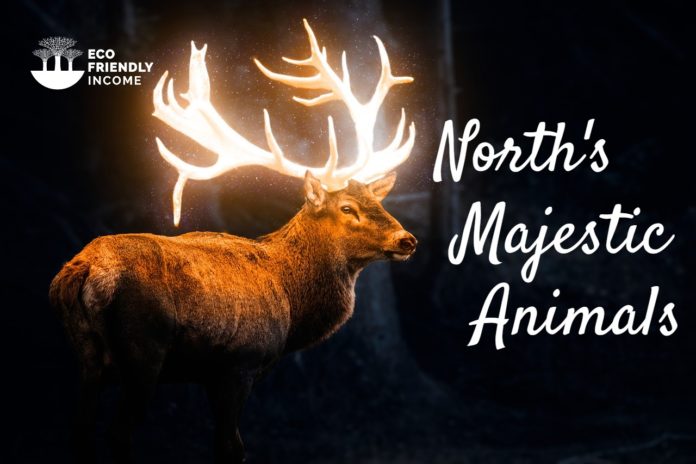Boreal forest mammals are some of the toughest animals found on the planet. The climate is harsh in these lands, adaptability is key if you want to live here. Food can become so scarce, animals have to travel tens of kilometers to find it.
Boreal forests are the largest biome on planet, some of the last largely untouched forests are found here.
North America’s boreal forest combined with the Russian and North European taiga makes up to 31% of the world’s forest coverage.

This vast land gives plenty of room for many animals to thrive. While the boreal forest may not be as biodiverse as the Amazon forest, there are still an impressive amount of animals who call it home.
The boreal forests are the home to:
- 85 Mammals Species
- 325 Bird Species
- 130 Fish Species
- 6 Reptile Species
- 12 Amphibian Species
- 32 000 Insect Species
6 orders of terrestrial mammals are found living in the boreal forest and within each order, you can find distinctive families.
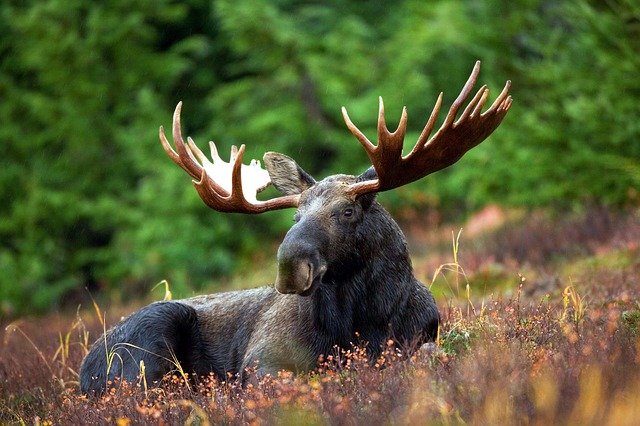
Boreal Forest Mammals – Order Artiodactyla
Artiodactyla are hooved ungulates with even toes. All of their weight is commonly distributed only among two of their toes, leaving a two-toed hoof print.
Mammals from order artiodactyla are found on every continent with the exception of Antarctica, and Australia. 13 species of artiodactyla are found in the boreal forest today.
All of the families within this order are herbivorous with the exception of the wild pigs who are omnivorous.
The majority of these mammals have antlers or horns, which serve as a great defense against predators, but also to display superiority over rivals.
Cervidae Family
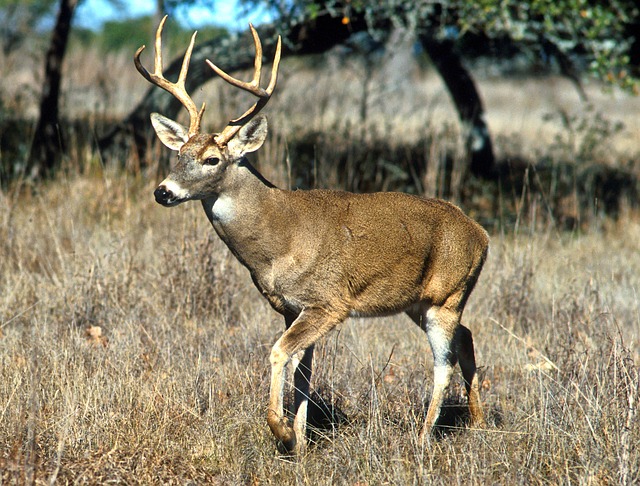
White-tailed Deer
Odocoileus virginiaus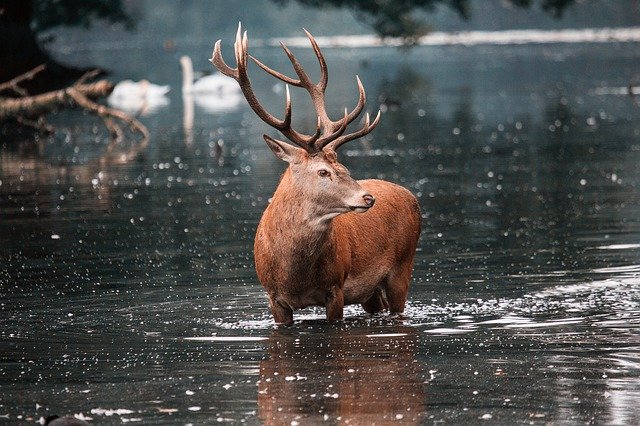
Red Deer
Cervus elaphus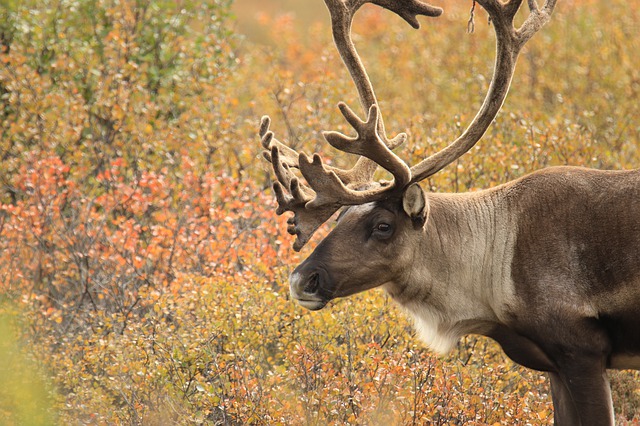
Caribou
Rangifer tarandus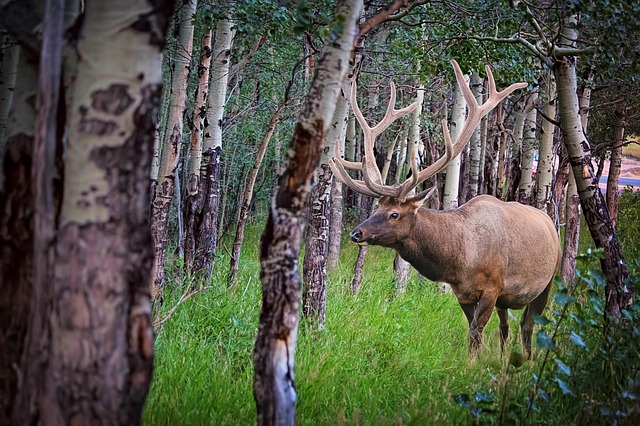
Elk
Cervus canadensis
Moose
Alces alces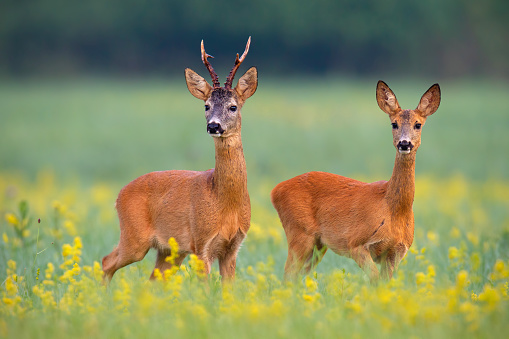
Roe Deer
Capreolus capreolus
Interesting Facts About Cervids
Mammals of the cervidae family grow antlers every year.
Starting from March to April, their antlers start to grow as a bone extension of their skull.
During that period, they are covered by soft velvety skin that is rich in blood vessels. And by the end of summer, the skin dries up and falls off in chunks, exposing the bone below. When winter end comes, the cells at the base antlers die and the antlers shortly fall off. This process starts over every year.
During rut season, a cervidae’s antlers become their pride and weapon. They will parade, showing off their shape and size in hopes of attracting females.
From time to time, two males will cross antlers and enter into a brutal battle. These battles sometimes leave terrible wounds but that is the price to pay to win over females.
Bovidae Family
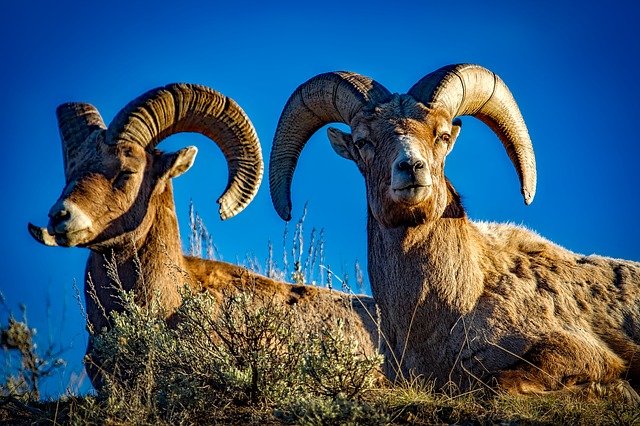
Bighorn Sheep
Ovis canadensis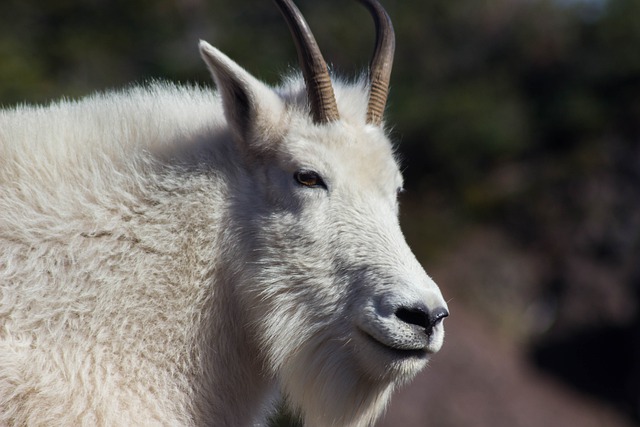
Mountain Goat
Oreamnos americanus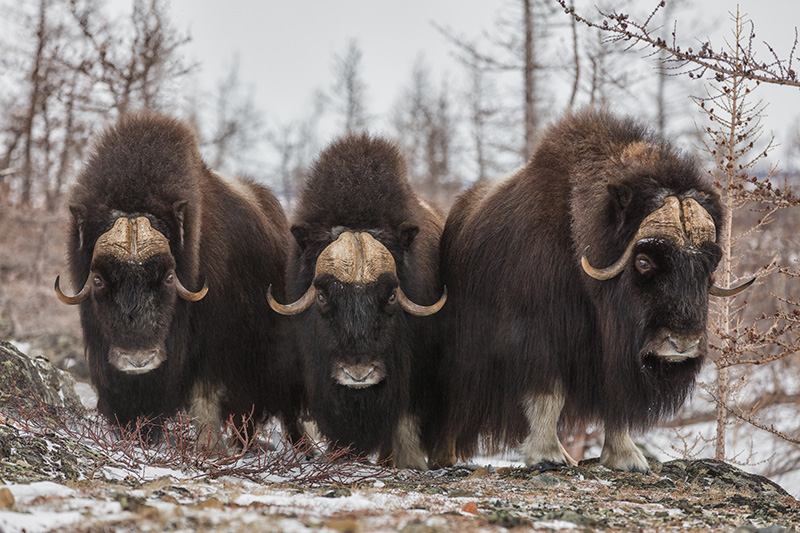
Musk Ox
Ovibos moschatus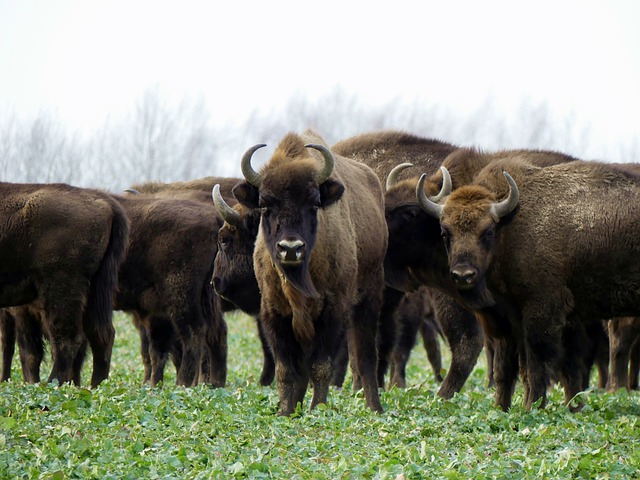
Wood Bison
Bison bison athabascae
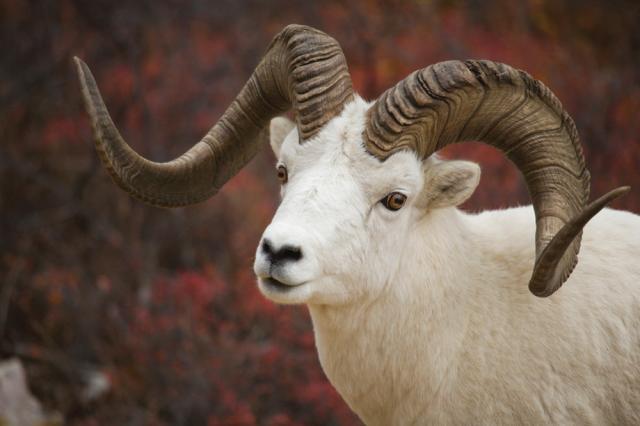
Dall’s Sheep
Ovis dalli
Interesting Facts About Bovids
The bovidae family possesses a ruminant stomach with 4 compartments, the rumen, the reticulum, the omasum, and the abomasum.
Plant matter, especially cellulose is hard to digest. These mammals have specialized molar teeth that are adapted in crushing plants for easier digestion.
Unlike the rodentia family, bovidae do not use their teeth to cut plants from the ground, instead, they use their tongue to bundle up plants, and rip them out.
Dall’s sheep and bighorn sheep will often face other males in head-to-head combat using their powerful horns. A male sheep’s horn can weigh up to 30lbs!
Suidae Family
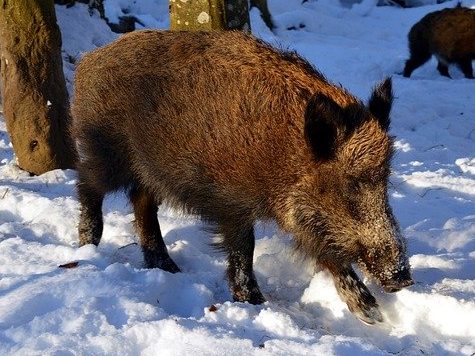
Wild Boar
Sus scrofa
Interesting Facts About Suids
Wild boar, unlike other boreal forest mammals of the artiodactyla order, are omnivorous.
They are a very adaptable species that aren’t necessarily native to some boreal forest areas but have moved in from further south.
Wild boars are nocturnal animals, they are active during the night and sleep the majority of the day.
They can cause problems in areas because of their quick reproduction and destructive behavior. Unchecked, a wild boar can grow to immense sizes and weigh up to 700 lbs!
Moschidae family
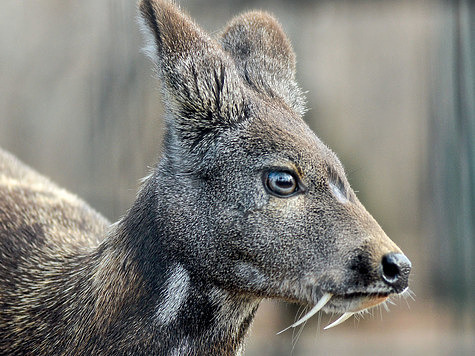
Musk Deer
Moschus
Interesting Facts About Moschids
Despite its name, the musk deer isn’t actually a deer, but the only remaining genus of the moschidae family.
This family of mammals was more common during the Miocene period but declined to only this species about 12,000 years ago. Today they are found in the boreal forests of Russia.
Musk deer will not grow antlers but instead have two small tusk-like teeth.
They also have a musk gland, which is especially prized within perfume makers. This hunt for musk deer gland has caused the decline of the species over the years.
Musk deer, like humans, possess only a single pair of teats.
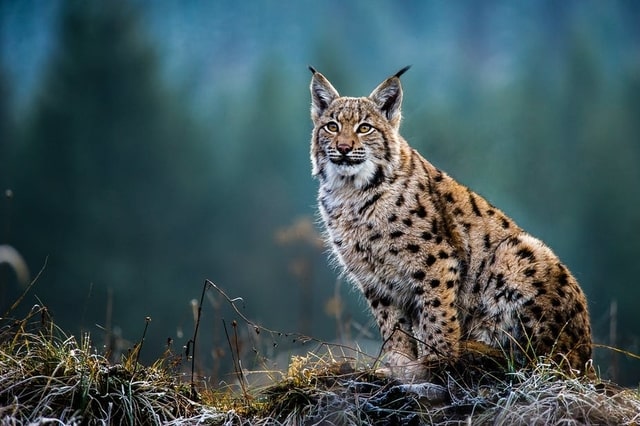
Boreal Forest Mammals – Order Carnivora
Mammals from the order carnivora are the predators of the natural world. They play an important role in the boreal forest ecosystem, and without them, ecosystems quickly collapse.
Carnivora teeth have evolved specifically to catch, hold on to prey and chew meat/bones.
The majority of these mammals have non-retractible claws, with the exception of felidae.
Carnivora’s sense of smell, hearing, and sight plays an important role in their lifestyle. Their eyes are specifically adapted to darkness, due to a reflective layer of cells (tapetum lucidum) at the back of their eyes. This layer is what gives them “flashy eyes” at night.
Mammals from the carnivora order have a sense of smell so fine, it can differentiate the freshness of a trail and the sexual readiness of a mate only from the odor.
Ursidae Family
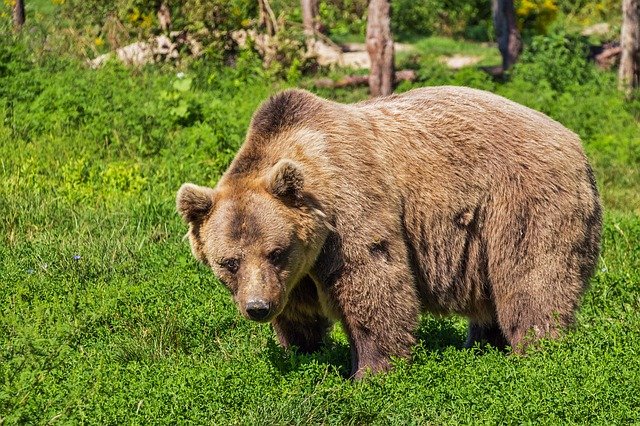
Brown Bear
Ursus arctos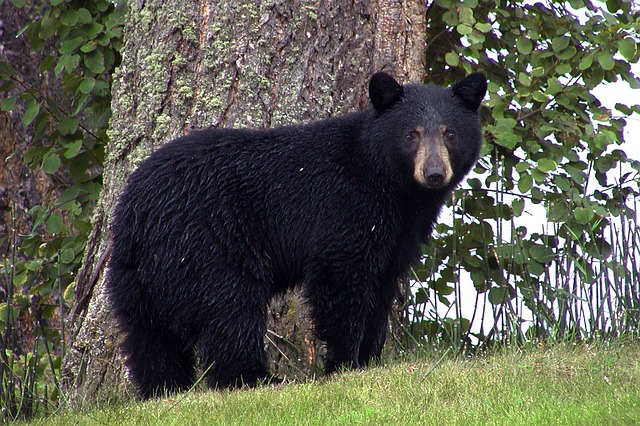
American Black Bear
Ursus americanus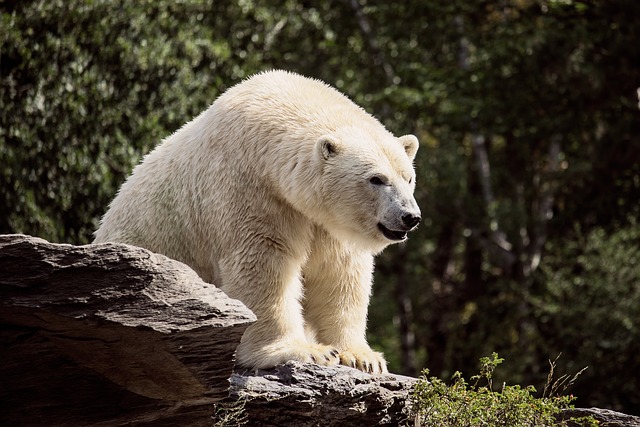
Polar Bear
Ursus maritimus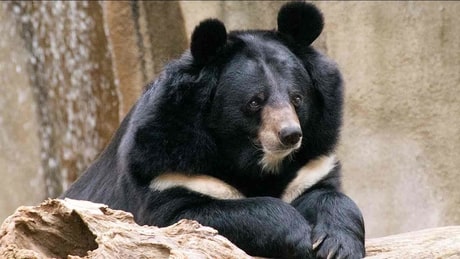
Asiatic Black Bear
Ursus thibetanus
Interesting Facts About Ursids
Mammals within the ursidae family are the most imposing terrestrial predators on the planet. The polar bear is the single largest walking carnivore of our era.
Bears have powerful arms and legs, they can even stand and walk on their hind legs. They also have agile lips that help them collect small food like berries and insects.
Ursidae do not completely hibernate during winter, they enter into a lethargique semi-hibernation but can still come out of their dens on winter days.
Bears have a special type of gestation, female bears control the time that they give birth, choosing only the most suitable period to ensure their cubs’ survival.
Canidae Family
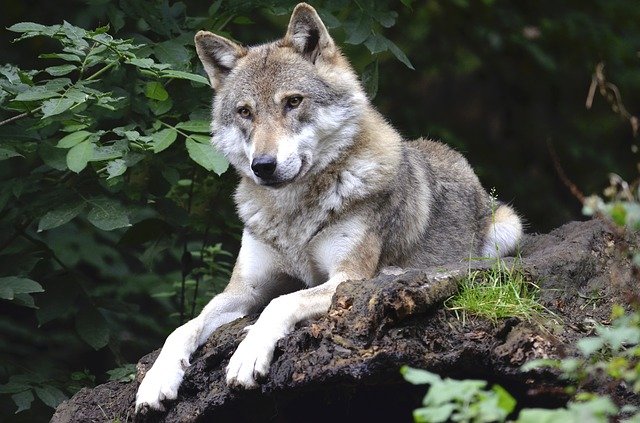
Wolf
Canis lupus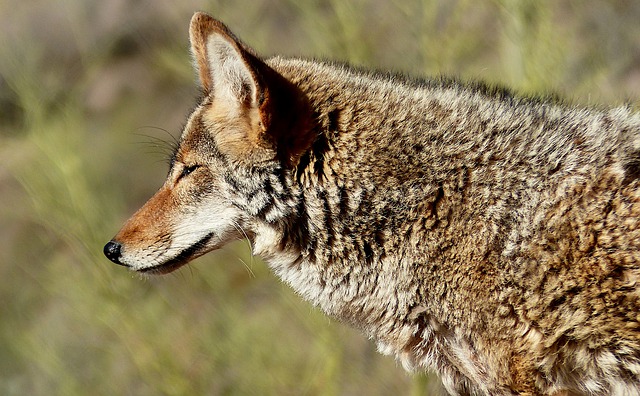
Coyote
Canis latrans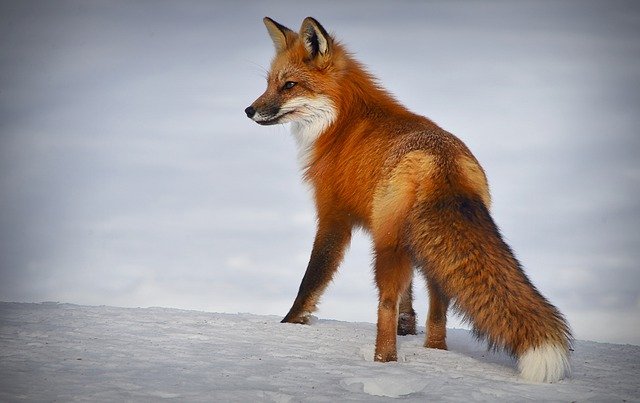
Red Fox
Vulpes vulpes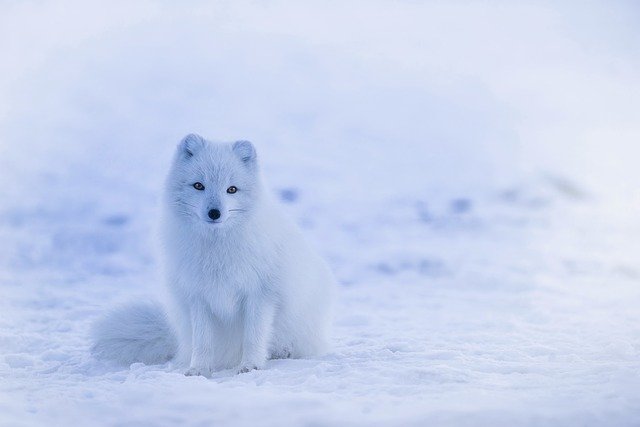
Arctic Fox
Alopex lagopus
Interesting Facts About Canids
Wolves and coyotes are incredibly social animals often hunting in packs. Additionally, newborn pups are not only raised by their parents but also by their uncles and aunts too.
Mammals of the canidae family are most known for their acute sense of smell. Their eyesight is fairly average but their long upward ears give them great hearing.
Foxes often hunt on sound alone, during winter, for example, they might smell the mice and voles underneath the snow but it’s by evaluating the sounds that they locate their prey. Red foxes can jump and catch mice as deep as 1m under the snow.
Wolves have great endurance, they are well suited to pursue large prey like caribou, bison or moose.
Coyotes and wolves both howl, they use them to communicate to others about their locations, warnings against predators, the position of prey, or announcing mating intentions.
Felidae Family
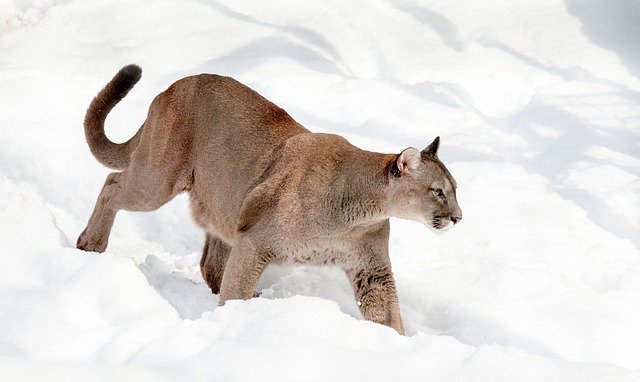
Mountain Lion
Puma concolor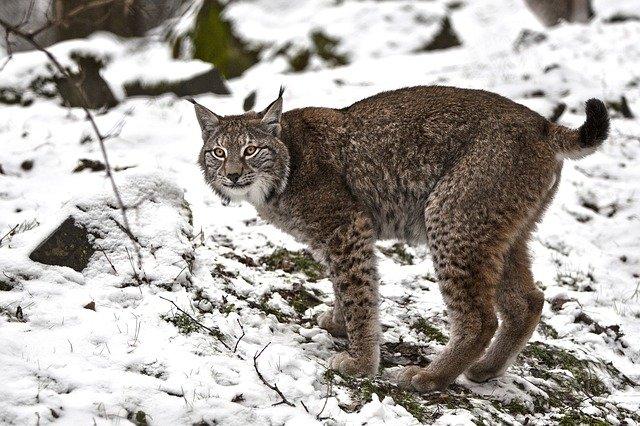
Canada Lynx
Lynx canadensis
Eurasian Lynx
Lynx lynx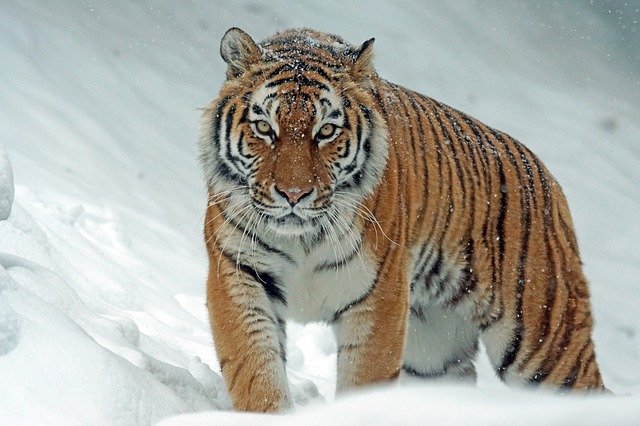
Siberian Tiger
Panthera tigris altaica
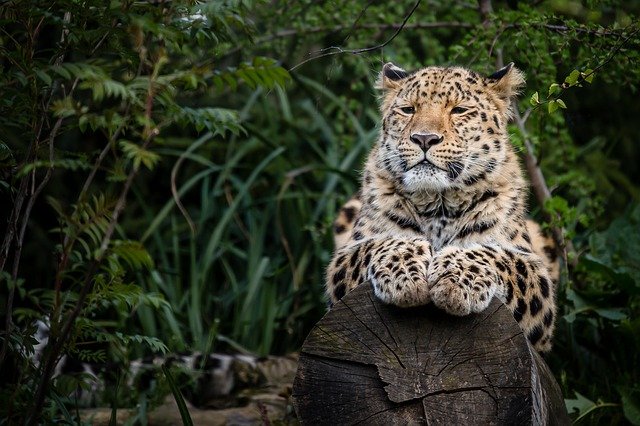
Amur Leopard
Panthera pardus orientalis
Interesting Facts About Felines
Mammals of the felidae family are some of the most fearsome predators of the boreal forest.
They have sharp claws, deadly fangs, we are pretty familiar with them because they are much like some of our favorite household pets, cats.
Agile, stealthy, and fast, felines are the most effective and evolved of all carnivores. They are solitary animals that mainly hunt at night, and masters at the element of surprise, often catching prey without being detected.
As of 2021, there are fewer than 500 Siberian tigers remaining in the wild, which are mostly found in the protected Sikhote-Alin Biosphere Reserve.
The amur leopard is one of the rarest carnivores on the planet, with fewer than 100 individuals left, living in a small patch of boreal forest just north of Korea.
Procyonidae family
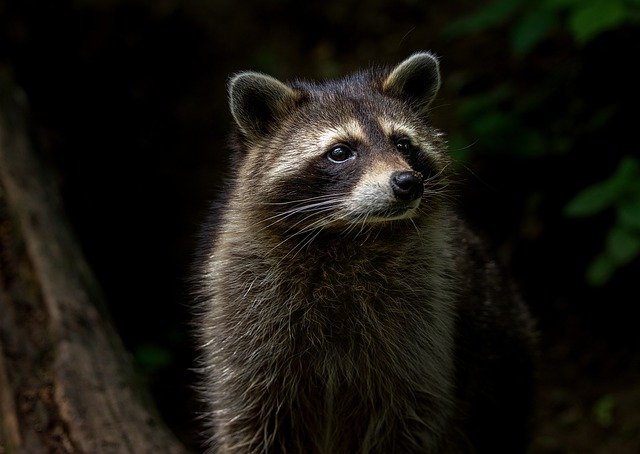
Raccoon
Procyon lotor
Interesting Facts About Procyonids
These mammals generally have a slender body, their fur patterns often show a masked face and rings around their tails.
Mammals from the procyonidae family have agile hands that can do complicated maneuvers. Raccoons are known for handling food and washing it.
Raccoons from the boreal forest are the largest of all procyonids and can weigh up to 26kg.
While they are boreal forest mammals, raccoons adapt well and in some regions, they happily live the urban life.
Mustelidae family
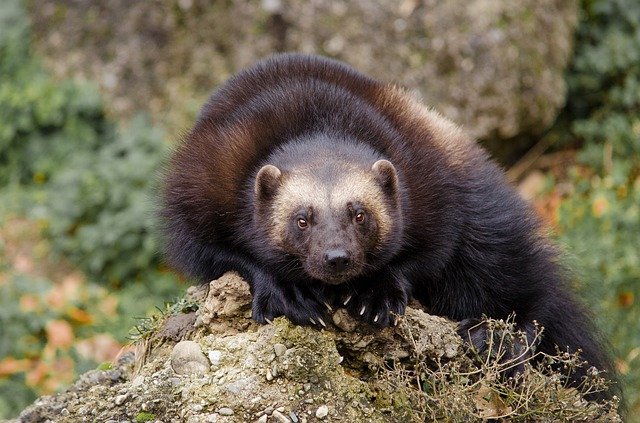
Wolverine
Gulo gulo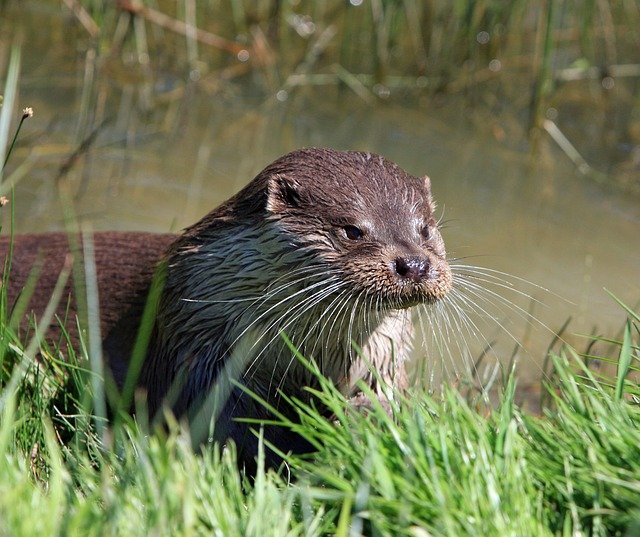
River Otter
Lutra Canadensis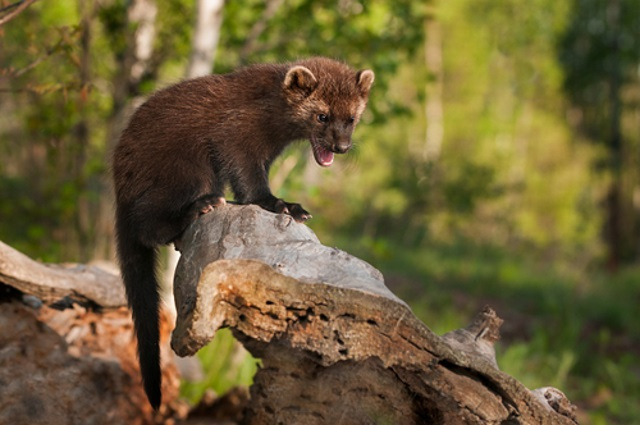
Fisher
Martes pennanti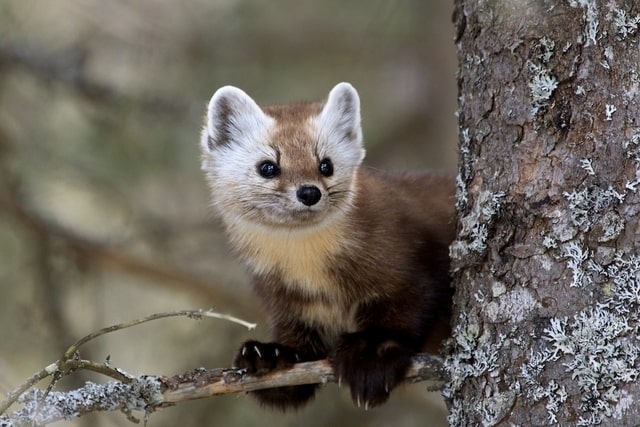
Marten
Martes americana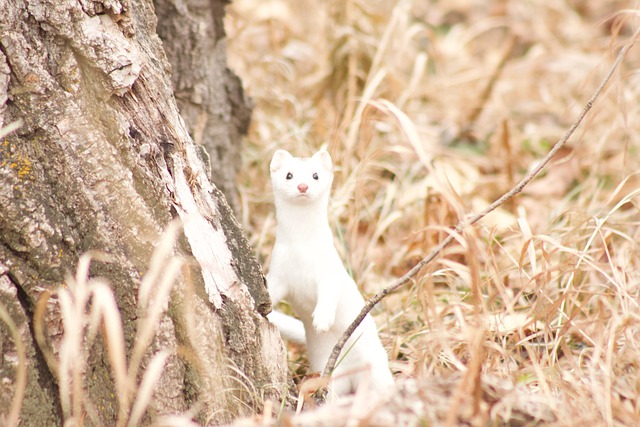
Ermine
Mustela erminea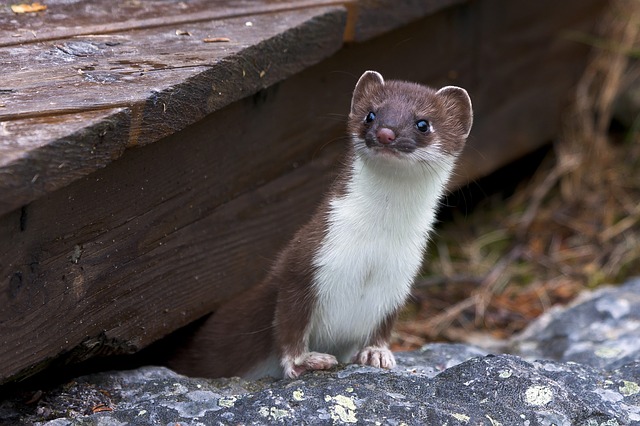
Long-tailed/Least Weasel
Mustela frenata/nivalis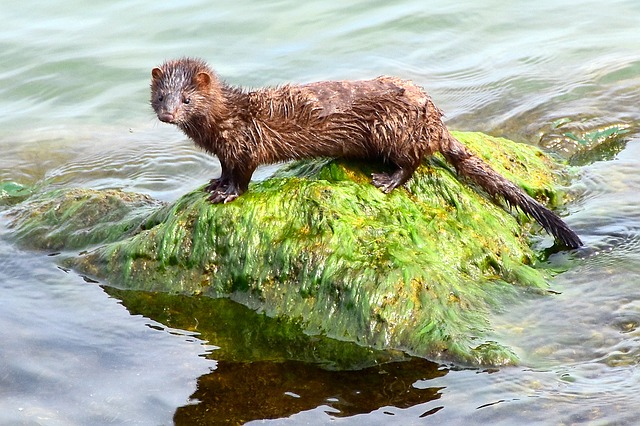
American Mink
Neovison vison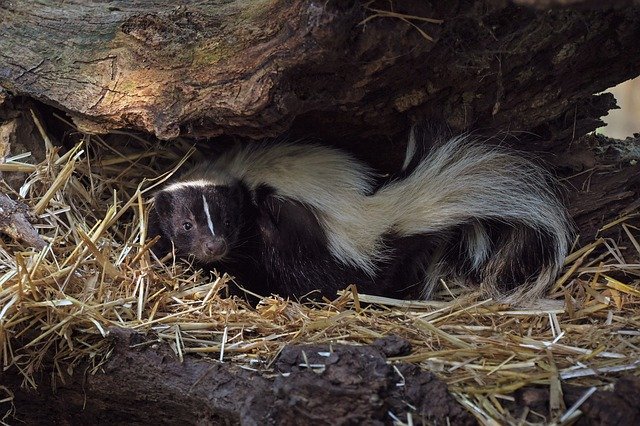
Skunk
Mephitis mephitis
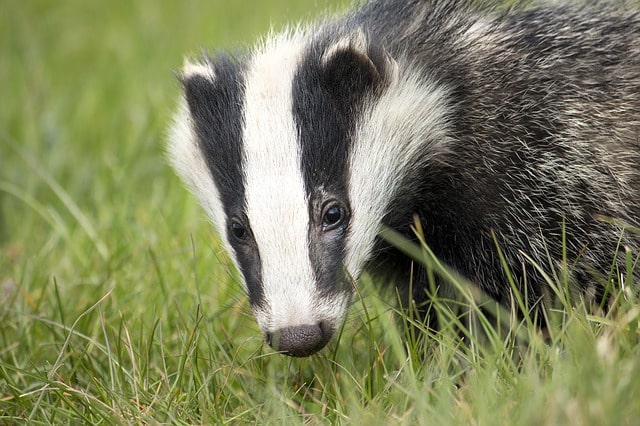
Badger
Meles meles
Interesting Facts About Mustelids
Small ears, short tails, thin elongated bodies, mustelids have almost a snake-like appearance. In the boreal forest, only the badger, wolverine, and skunk have a bulkier profile.
The smaller mustelids have quick and lively ways of getting around while the bulkier ones get around in a manner similar to bears.
The most advanced characteristic of this mammal family is their anal glands. These glands secrete and hold liquids with foul odors used to mark territories, but some mammals like the skunk can project this liquid in self-defense.
Similarly to bears, mustelid gestation is particular. A female can hold off the cellular division of the seeded ovule until a later time when conditions are more appropriate.
In smaller mustelids like weasels, spotting prey almost instantly activates the reflex of hunt and pursuit. As a result, even if the mammal has had its meal already, it can trigger a bloodbath of kills when they find a large group of prey.
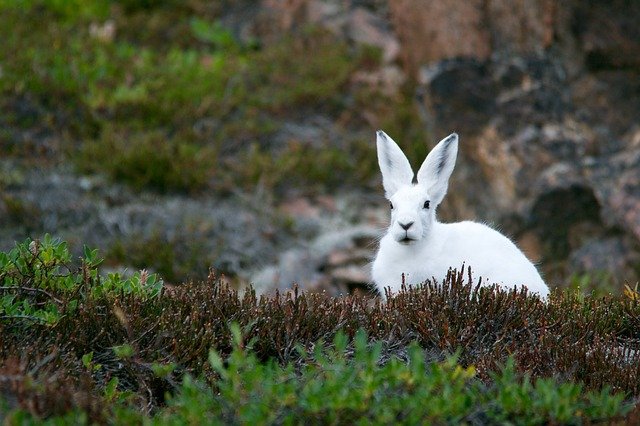
Boreal Forest Mammals – Order Lagomorpha
The lagomorpha order is relatively small, and not very diversified. There are only about 80 species that are lagomorpha in the world, only two are primarly found in the boreal forest.
These mammals, just like rodents have pairs of incisive teeth on the top and bottom row of their teeth, they grow continuously their whole life. What puts lagomorpha apart from rodentia is their second pair of smaller incisive directly behind the front ones.
Mammals found within this order are bunnies, rabbits and pikas, which are all herbivorous.
Leporidae Family
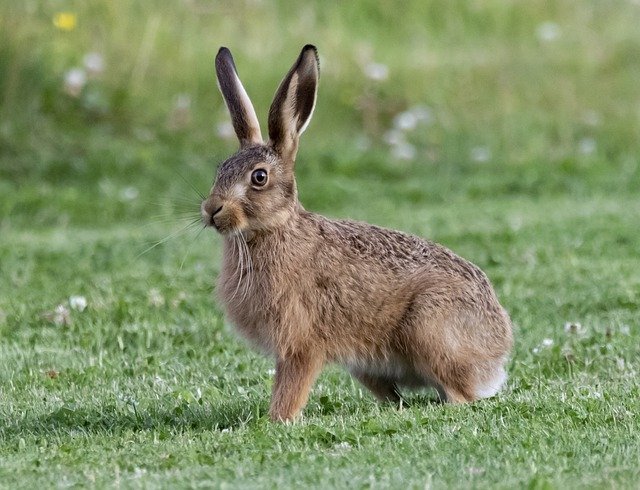
Snowshoe Hare
Lepus americanus
Arctic Hare
Lepus arcticus
Interesting facts About Leporids
A strange digestion system, mammals such as hares use a system called caecotrophy. This is essentially re-ingesting pellets of poop that haven’t been fully digested the first time. These pellets are called caecotrophs, they are rich in protein and vitamins, and are essential to a healthy function.
The success of this mammal family is in part by the incredible reproduction rate. Every year, a hare can have 4 litters that can have 1-8 babies each.
Hares can reproduce as early as 3 months old and can live up to 9 years, which means 1 female hare could have hundreds of offspring in her lifetime.
They are some of the most numerous boreal forest mammals, even found in large urban cities where no predators can reach them.
Ochotonidae Family
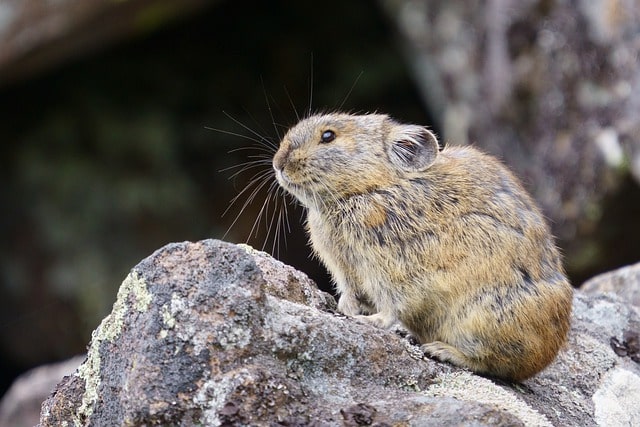
Northern Pika
Ochotona Hyperborea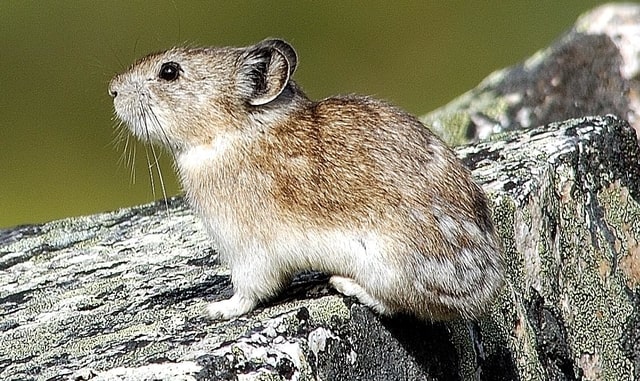
Collared Pika
Ochotona collaris
Interesting Facts About Ochotonids
Pikas often live on rocky hillsides and mountains, the collared pika lives in the mountains of Alaska.
Pikas spend their summers collecting food, curiously, they will place their stash of herbs strategically in the sun to dry and cure the food for longer storage.
They even pick toxic herbs that decompose slowly for the sole purpose of keeping their supplies fresh for longer.
Pikas don’t hibernate, so every year they need to build a big stash of flowers and plants to survive winter.
Building a stash for winter is hard work, some pikas have been seen stealing from their neighbor’s stash to survive, sneaky!
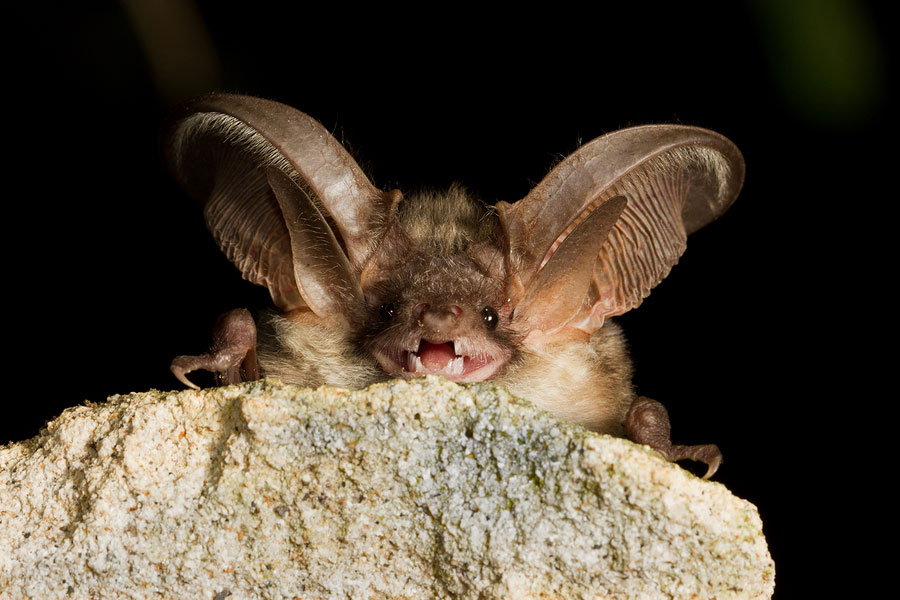
Boreal Forest Mammals – Order Chiroptera
Animals from order Chiroptera are the only mammals that have the ability to fly. Their bone structure is similar to other mammals but they developed longer hands and fingers to accommodate wings.
In the world, there are as many as 950 different species of bats regrouped into 17 families. Some have diets more oriented towards fruits and nectar while other catch fish, some prey on sleeping predators for blood but bats most commonly hunt insects.
Bats may be scary to some of us but in truth, they are one of our best allies when it comes to controlling insect populations.
Only 6 species of bats live in the boreal forest.
Vespertilionidae Family
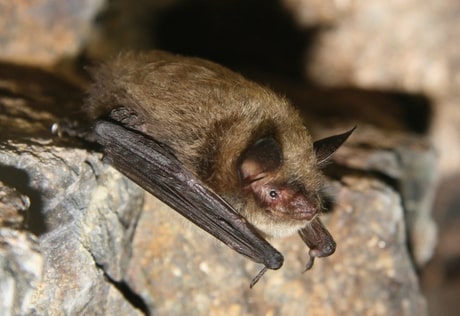
Little Brown Bat
Myotis lucifugus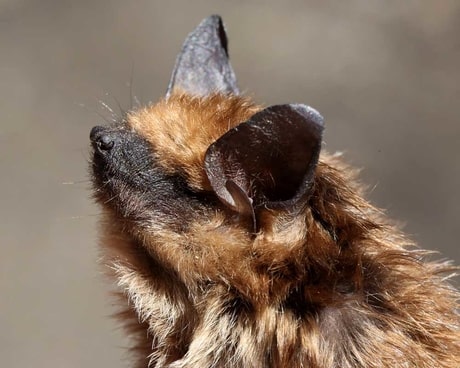
Big Brown Bat
Eptesicus fuscus
Northern Long-eared Bat
Myotis septentrionalis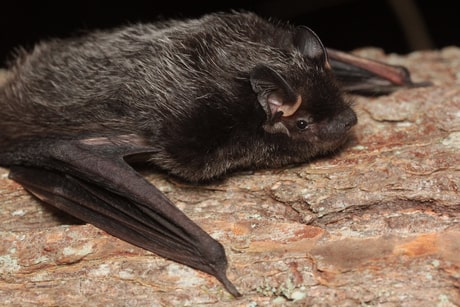
Silver-haired Bat
Lasionycteris noctivagans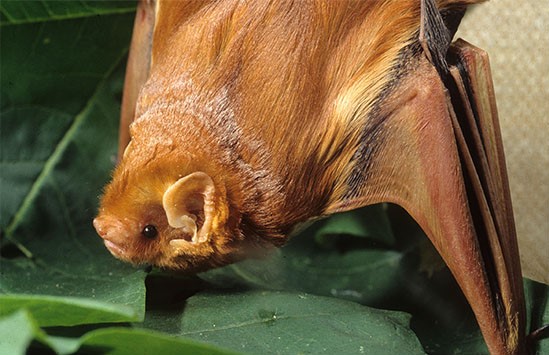
Eastern Red Bat
Lasiurus borealis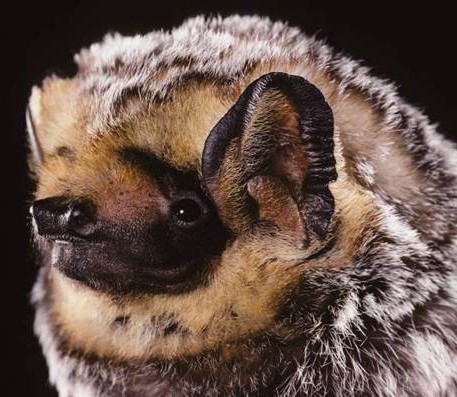
Hoary Bat
Lasiurus cinereus
Interesting Facts About Vespertilionids
This family of bats is nocturnal, their sight is minimal, but their ears are very advanced. Bats direct themselves while flying and hunting by using echolocation.
Most of their sounds, are so high pitched that the majority of time, you won’t be able to hear them.
The most active time that bats hunt is the golden hour when the sun rises and when the sun sets. At that hour, you will often see what looks like birds swooping over your heads. If you look closely, they are not birds, but bats hunting the mosquitoes and flies around you.
One nursing bat can eat as many as 4500 bugs in one single night.
Some of the best hunting spots for bats are night lamps that attract bugs.
A great way to attract bats to your homestead is to build small bat houses with openings of around 3cm.
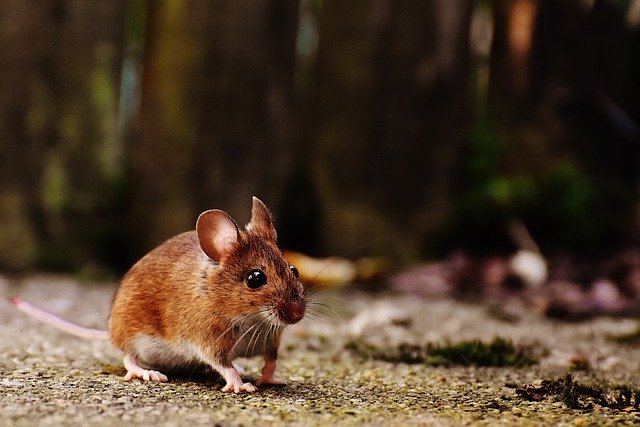
Boreal Forest Mammals – Order Rodentia
Out of all mammals, order Rodentia makes up the most important group, with the largest variety of individuals. There are up to 1738 species of rodents that can be found all over the globe, with the only exception of Antarctica.
Many species found in this order have different styles of life, which is a undeniable proof of their versatilty and adaptability.
One of the most distinctive characteristics of rodents is their two incisive top and bottom teeth, which continually grow. It’s only by their constant use and scissoring action that they use up and stay sharp. If for any reason, the animal cannot use its teeth, they will continually grow and possibly cause life-threatening issues.
Sciuridae Family
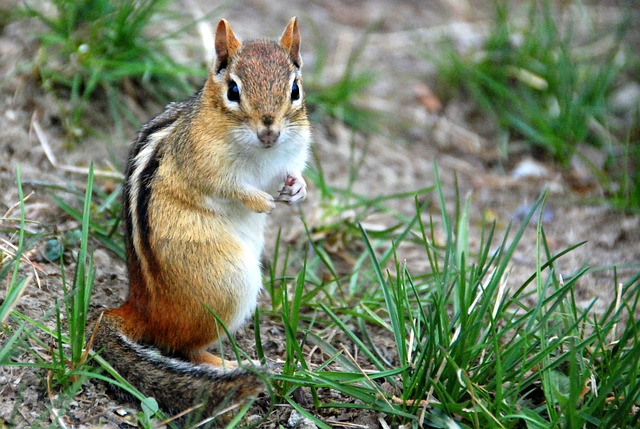
Eastern Chipmunk
Tamias striatus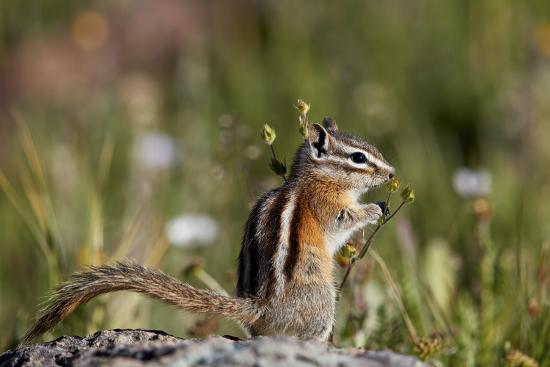
Least Chipmunk
Eutamias minimus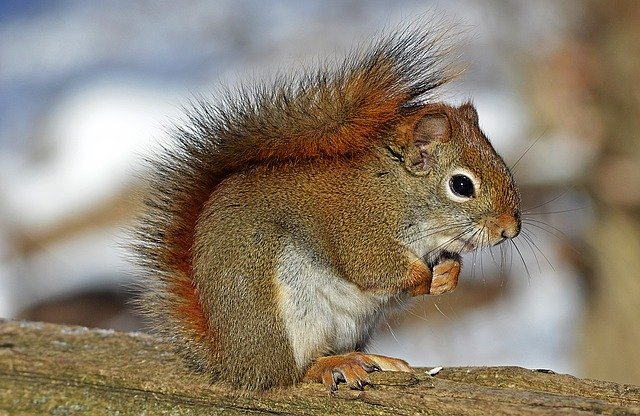
Red Squirrel
Tamiasciurus hudsonicus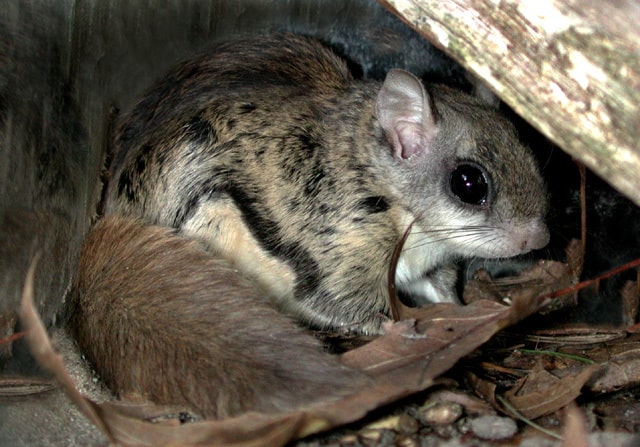
Northern Flying Squirrel
Glaucomys sabrinus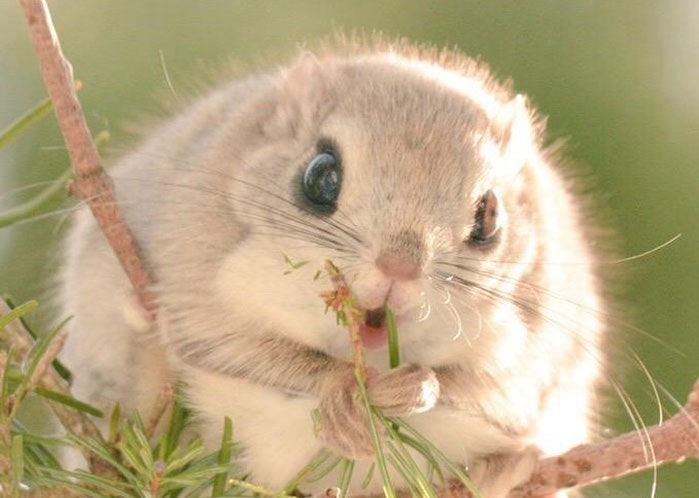
Hokkaido Flying Squirrel
Pteromys momonga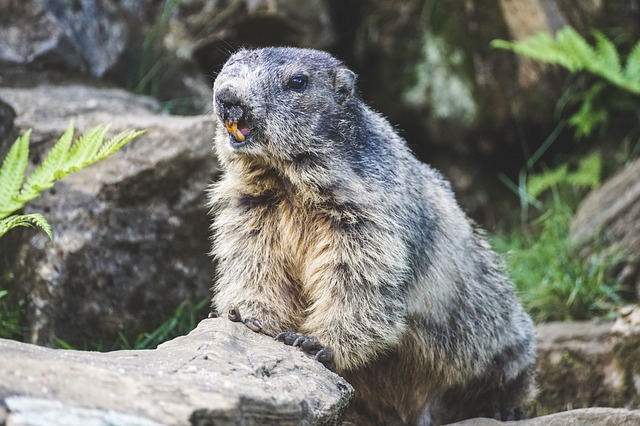
Marmot
Marmota monax
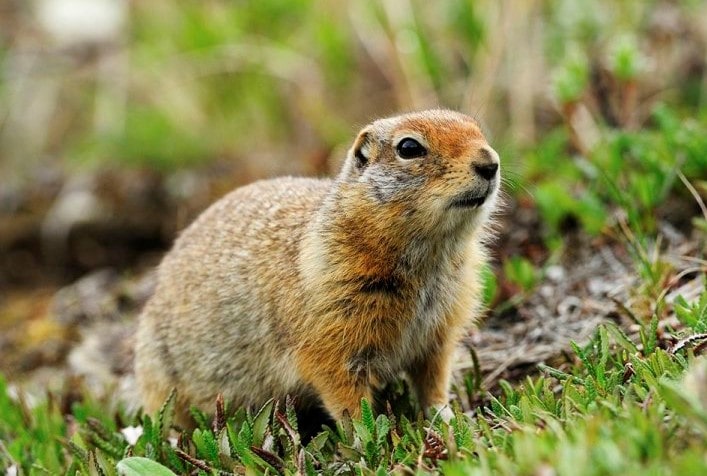
Arctic Ground Squirrel
Urocitellus parryii
Interesting Facts About Sciurids
Squirrels, chipmunks, and marmots are very agile with their hands. In squirrels and chipmunks, it’s especially useful for collecting nuts, seeds, and fruits. For marmots, it’s useful for digging their den and climbing trees if it has to.
Squirrels like to live on trees, their long tails serve as a great counterbalance for their acrobatics. Chipmunks and marmots stick to the ground and have relatively shorter tails.
Marmots, like bears, will go into hibernation that can start in October and end in April. Chipmunks and squirrels can go into a deep sleep during winters but will often come out on sunny days to scavenge for food.
Northern flying squirrels can use the folds between their arms to glide for distances as far as 20m.
Castoridae Family
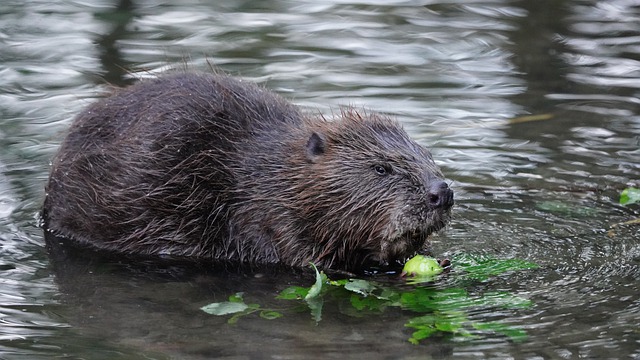
Beaver
Castor canadensis
Interesting Facts About Castorids
Beavers are the greatest engineers of the rodent world. They live in families that work together to build dams and huts for their living environment.
One beaver colony can have as many as 12 individuals, and they like to synchronize their activities with each other. When it’s time to work, they work and when it’s time to sleep, they like to pile up into a big ball of comfort.
Beaver dams can be harmful to farmers and flood precious farmland. Although generally, beaver floodlands turn an area into a whole new ecosystem that attracts new animals.
Beaver floodlands make great fishing grounds for birds, terrific new spawning grounds for fish, amphibians, and insects.
Additionally, beaver activity can increase plant diversity by as much as 33%, filter water, store water for drought, and ironically even minimize further flood risk.
Cricetidae Family

Deer Mouse
Peromyscus maniculatus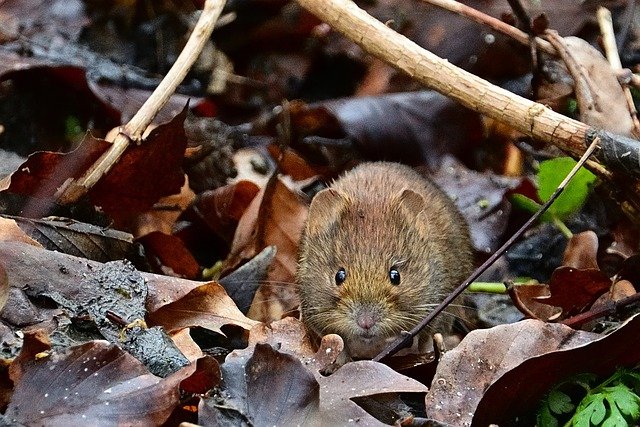
Red-backed Vole
Clethrionomys gapperi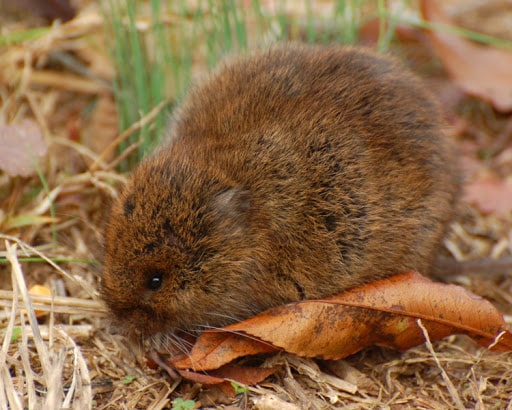
Meadow Vole
Microtus pennsylvanicus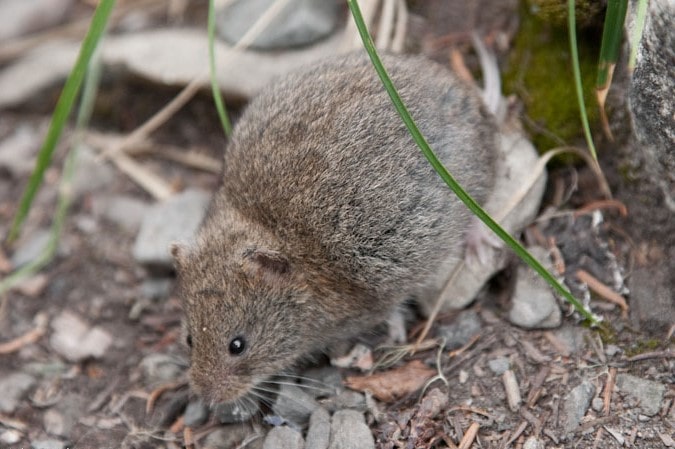
Heather Vole
Phenacomys intermedius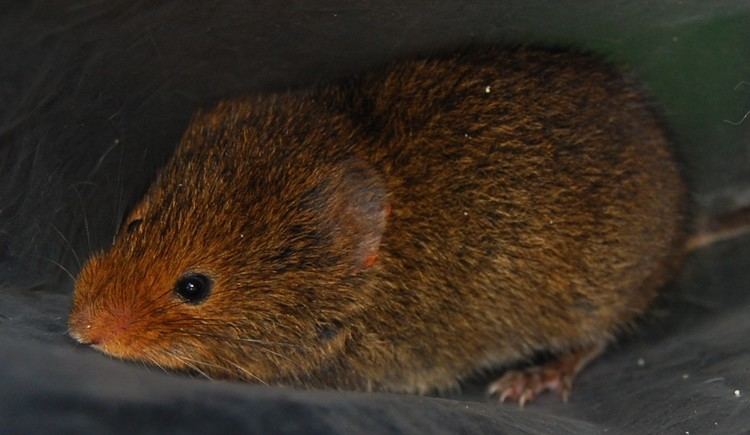
Yellow-nosed Vole
Microtus chrotorrhinus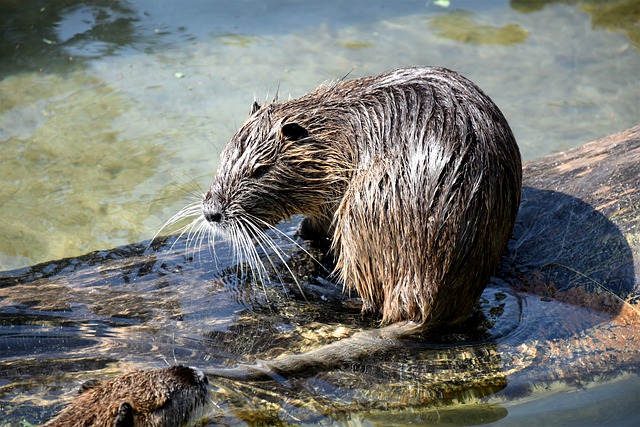
Muskrat
Ondatra zibethicus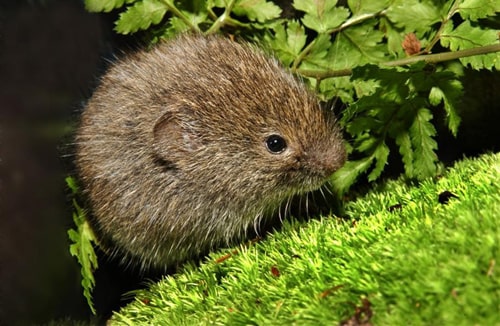
Bog Lemming
Synaptomys cooperi/borealis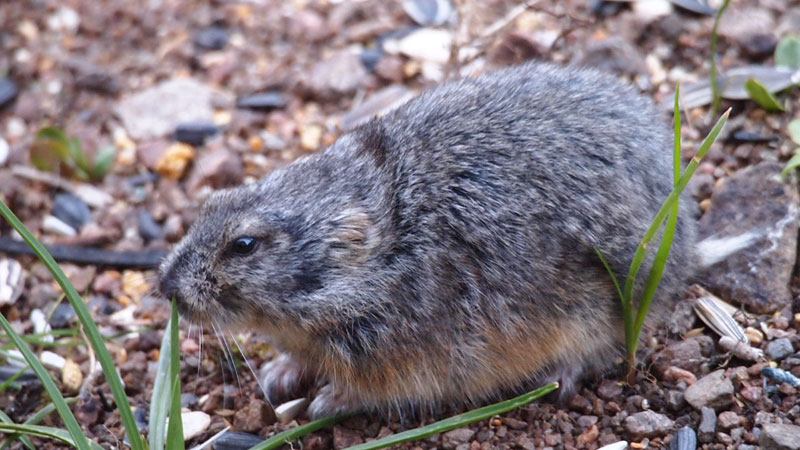
Ungava Lemming
Dicrostonyx hudsonius
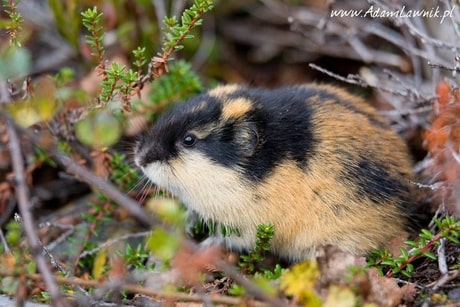
Norway Lemming
Lemmus lemmus
Interesting Facts About Cricetids
About a third of all rodents come from the cricetidae family, and all of them originate from the new world. Just like other rodents, their incisive teeth grow continuously.
Mice in this family have big ears, long tails, and big eyes, while voles and lemmings have smaller eyes and ears, and shorter tails.
Musk rats live similar lives as beavers, they are semi aquatic mammals that also build huts.
Muridae Family
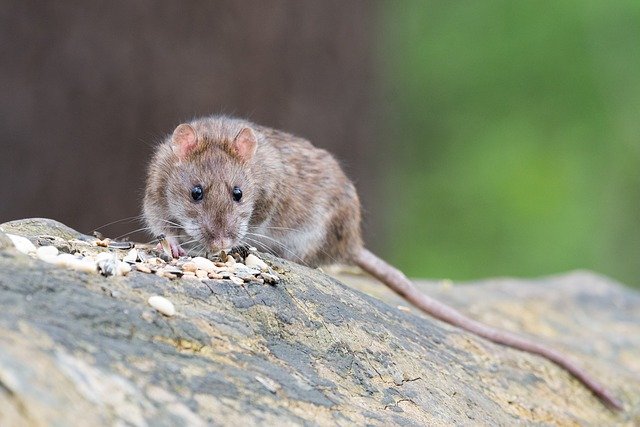
Norway Rat
Rattus norvegicus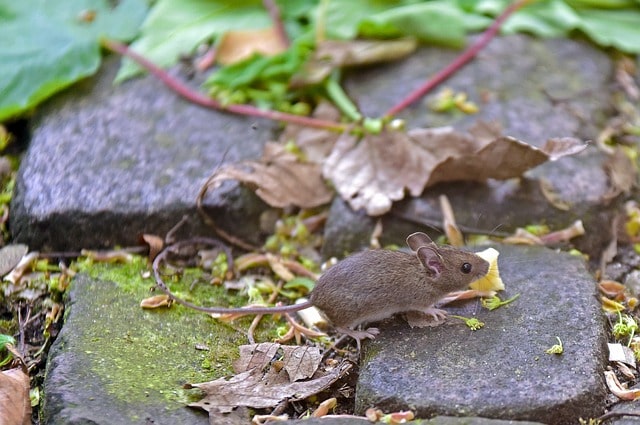
House Mouse
Mus musculus
Interesting Facts About Murids
Despite their name, Norway rats are originally from Asia. They are one of the most adaptable species on the planet, they easily invaded Europe and quickly spread all over America when they were introduced in 1776.
In history, it might be one of the most destructive species toward the human race. They infiltrate our cities, farms, homes, barns, silos, storage facilities, landfills, sewer systems, and riversides.
Rats spread the plague in the 1300s from fleas (who were the carriers) hitching rides their backs, which was responsible for as many as 25 million deaths.
House mice are not much different, they infiltrate our homes and restaurants and leave behind trails of droppings.
Dipodidae Family
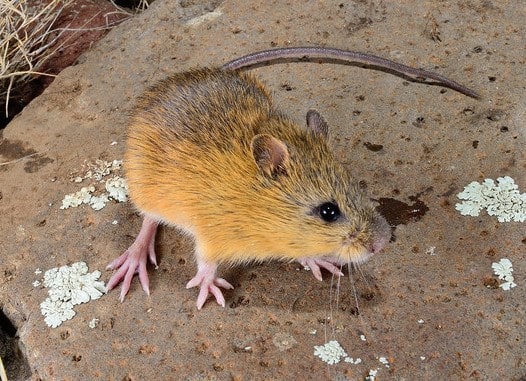
Meadow Jumping Mouse
Zapus hudsonius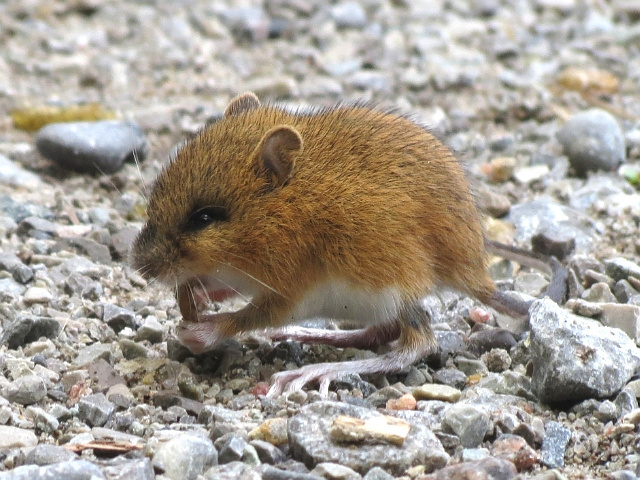
Woodland Jumping Mouse
Napaeozapus insignis
Interesting Facts About Dipodids
Jumping mice hind legs are much longer than a regular mouse’s, that is how you can easily identify them.
When alarmed, these powerful hind legs can propel woodland jumping mice as far as 4m (16 feet) forward.
You can find them walking regularly on their 4 legs or hopping along in 3-15cm hops.
Erethizontidae Family
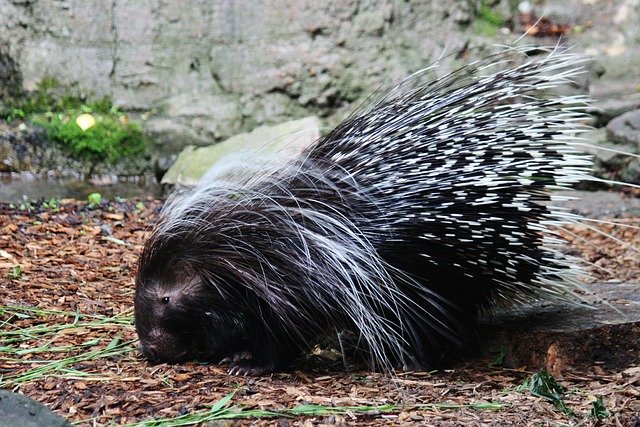
Porcupine
Erethizon dorsatum
Interesting Facts About Erethizontids
Surprisingly, you commonly find porcupines up in trees, where they spend most of their time. They are strictly herbivores, and get their food from plants, like tree bark, new growths, water lilies, but above all they love salt.
An adult porcupine wields up to 30,000 sturdy quills, which are soft only at birth, and harden within 2 hours. Each quill is from 5-6cm long and has microscopic barbs at the ends. Additionally, the barbs expand when they make contact with warmth, like the skin, making them even harder for you to remove.
In general, porcupine live from 5-7 years but have been known to live up to 11 years.
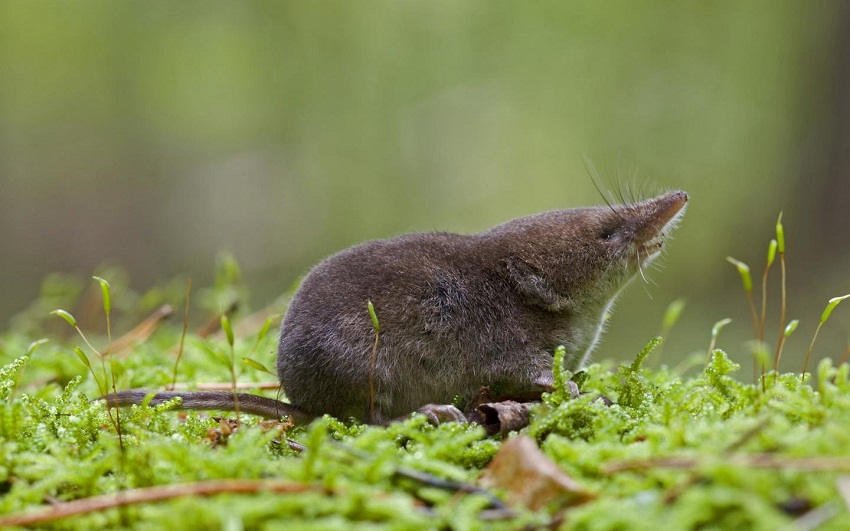
Boreal Forest Mammals – Order Insectivora
Insectivora are some of the most primitive mammals that reproduce by placenta. There are up to 354 insectivora species regrouped into 7 families. Only three of them are found in the boreal forest, the soricidae, Erinaceidae, and talipidae families.
Soricidae and talipidae species both respectively have long sensitive noses, tiny eyes, and short but dense fur. Their paws have 5 clawed fingers, and their bodies give off a foul odor that puts off most predators. Interestingly, unlike mice, shrews rarely have external ears.
Soricidae Family
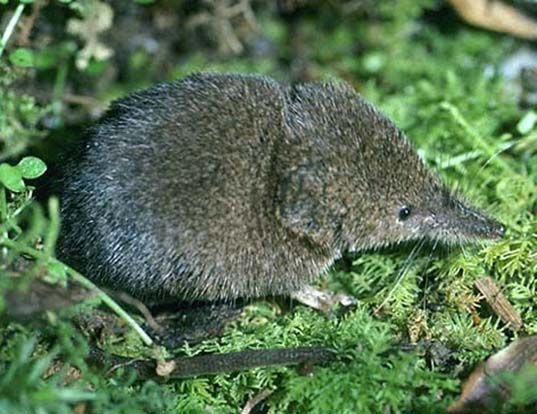
Masked Shrew
Sorex cinereus
Arctic Shrew
Sorex arcticus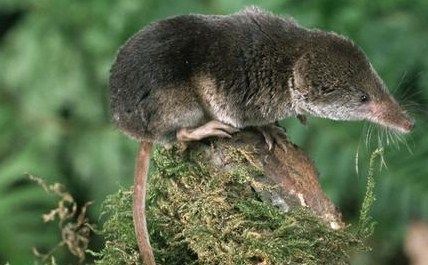
Gaspé Shrew
Sorex gaspensis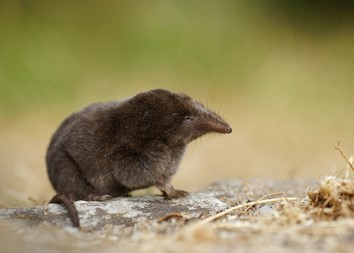
Pigmy Shrew
Sorex hoyi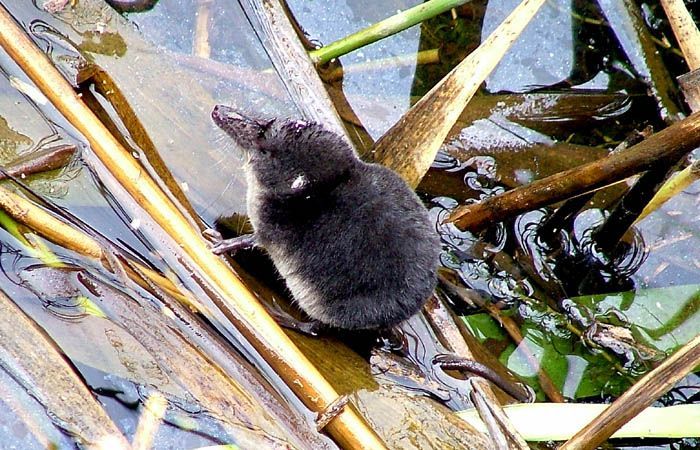
Northern Water Shrew
Sorex palustris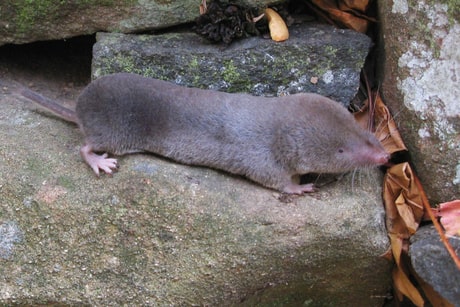
Northern Short-tailed Shrew
Blarina brevicauda
Interesting Facts About Soricids
The smallest mammals on the planet can be found in the soricidae family, like the pigmy shrew who weighs around 2.5g, about half the weight of a sheet of paper!
Since species of this family have such a small size, their metabolism is extremely fast. Their heartbeats can range from 780 to 1320 heartbeats per minute, which means they need to eat a terrific amount of food to keep up. To survive, shrews need to eat, at the minimum, the equivalent of their body weight in food every day.
Shrews have a hidden weapon, venom, which makes them fearsome predators. The source of their venom is their submaxillary glands, which are below their bottom teeth.
The venom is spread to their prey by saliva in their bite. The effect is paralyzing, it can even subdue larger prey such as garter snakes and baby rabbits.
Since shrews spend most of their life underground in darkness, their eyesight is very limited. They direct themselves mostly by echolocation, using the sounds they make while moving to measure where they are.
Generally, shrews won’t be a nuisance to you, more often they are a help since they are the fearsome enemy of many annoying insects.
Erinaceidae Family
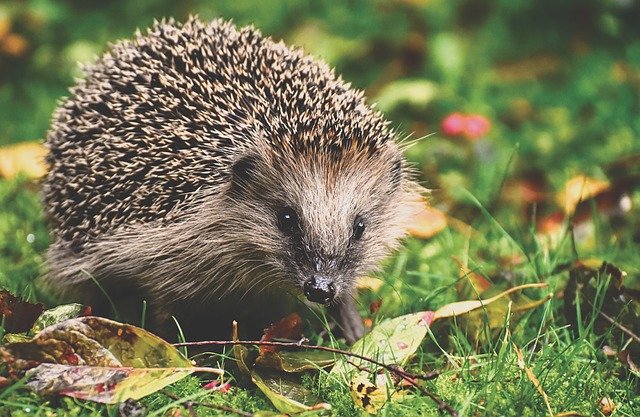
European Hedgehog
Erinaceus europaeus
Interesting Facts About Erinaceids
When threatened, hedgehogs often roll themselves into a ball of spines. Their backs are covered with more than 7000 quills that can flare up using their muscles.
While they might remind you of a porcupine, they’re not related. Their quills also don’t have barbs on the ends like porcupine’s quills.
Hedgehogs hibernate in their dens during winter, usually from November to April.
Talipidae Family
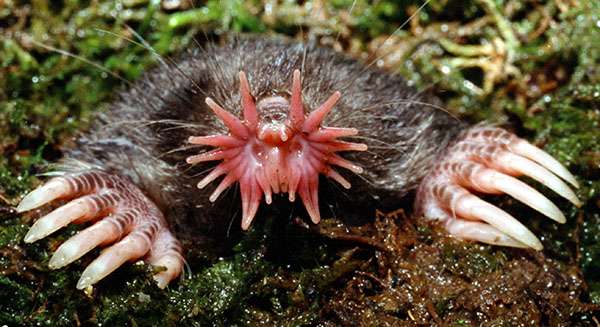
Star-nosed Mole
Condylura cristata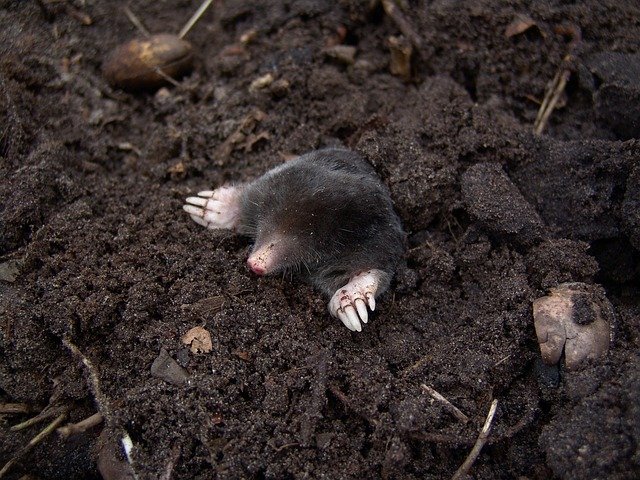
European Mole
Talpa europaea
Interesting Facts About Talipids
By just looking at the star-nosed mole, you could say it’s a distinctive mammal. Given they live a semi-aquatic life, their organism has adapted to its environment.
Half of their life being underground, moles have developed strong arms and legs. Their claws are powerful and give them an incredible capacity for digging.
It’s measured that a single mole can dig a 2m long gallery in about one hour.
The star-nosed mole’s strange nose is what easily gives up its identity. The nose itself is made up of 22 sensitive “tentacles” that help it direct itself in the dark undergrounds.
Additionally, the star-nosed mole’s nose can sniff its prey underwater. It blows air bubbles and re-inhales them, detecting the odors of its prey.
Resources
Online:
- https://www.worldatlas.com/articles/what-animals-live-in-the-taiga.html
- https://www.hww.ca/en/wildlife/mammals
- https://en.wikipedia.org/wiki/Wildlife_of_Russia
- https://www.ecologyandsociety.org/vol2/iss2/art9/main.html
- Our Planet Episodes on Netflix
- BBC Documentaries
Print:
- Jacques Precott & Pierre Richard, 1996. Mammifères du Quebec et de l’est du Canada.
- Louise Beaudin & Michel Quintin, 1983. Mammifères terrestres du Québec, de L’Ontario et des Maritimes.
- Angele Delaunois, 1991. Les mammifères de chez nous.
If you like this article, you might also appreciate my other article: Boreal Forests of the World: North’s Natural Wonder.

